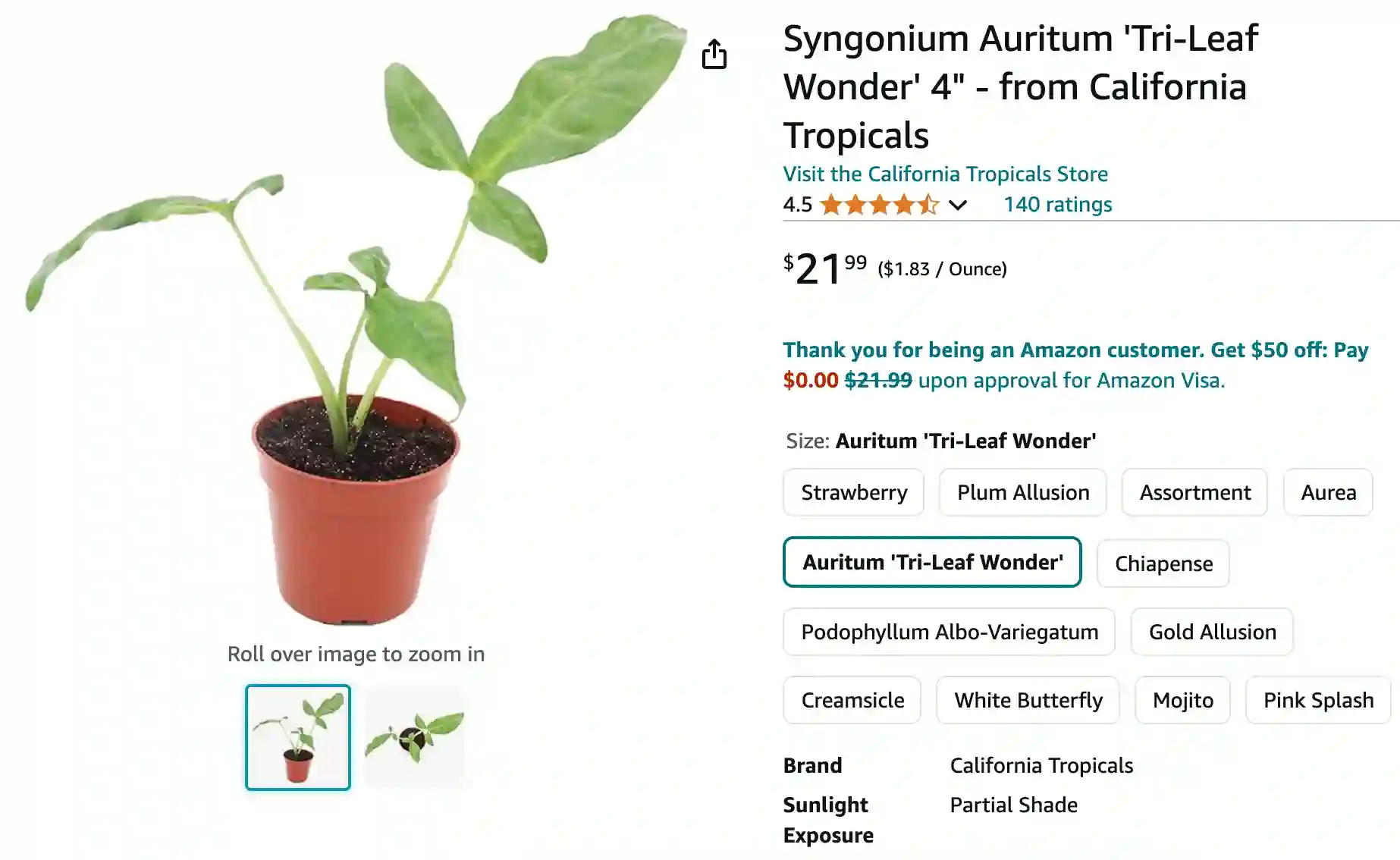
Syngonium Trileaf Wonder: Your Guide to This Captivating Climber
Hi, Ferb Vu here! Today, we’re diving into the world of the Syngonium Trileaf Wonder, a captivating climber that’s quickly becoming a favorite among houseplant enthusiasts. From its stunning foliage to its easy-going nature, this plant offers a whole lot of charm in a compact package.
What is a Syngonium Trileaf Wonder?
The Syngonium Trileaf Wonder, also known as the Tri-Leaf Wonder, is a beautiful variety of the Syngonium Podophyllum species. It’s known for its unique foliage – the leaves start off as heart-shaped and then, as they mature, split into three distinct lobes, resembling a three-pointed star. This fascinating transformation is what earned it the “Trileaf” nickname.
The Trileaf Wonder boasts a rich green color with a glossy sheen, adding a touch of elegance to any indoor space. It’s a vining plant, meaning it grows long runners that can trail or climb. This makes it perfect for hanging baskets, moss poles, or letting it cascade over a shelf.
Syngonium auritum vs Trileaf Wonder
For a while, I thought Syngonium Auritum and Trileaf Wonder were entirely different plants. But after bringing both into my collection, I realized Trileaf Wonder is actually a cultivar of Syngonium Auritum! Here’s what I’ve found:
Syngonium Auritum: This beauty throws out a wider variety of leaf shapes. Mine has sprouted some stunning arrowhead leaves, but also some with deeper lobes that look almost heart-shaped. It grows faster than the Trileaf Wonder, and seems less fussy about light levels. I can get away with keeping it a bit farther from the window, where it unfurls new leaves with a captivating blend of green and light pink.
Syngonium Trileaf Wonder vs. Other Popular Houseplants:
1. Pothos: Both the Trileaf Wonder and Pothos (Epipremnum aureum) are easy-care vining plants, making them ideal for beginners. However, the Trileaf Wonder offers a more unique and eye-catching foliage with the three-lobed leaves. Pothos, on the other hand, is known for its heart-shaped leaves that come in various variegations.
2. Philodendron: Similar to the Trileaf Wonder, Philodendrons come in a wide variety of shapes and sizes. Some climbing Philodendrons can rival the Trileaf Wonder’s growth habit. However, Philodendrons often have larger, sometimes textured leaves, while the Trileaf Wonder’s charm lies in its glossy, three-lobed foliage.
3. Devil’s Ivy: The Devil’s Ivy (Epipremnum aureum ‘Neon Pothos’) is a popular relative of the Pothos with stunning neon-green foliage. While both plants are easy to care for, the Devil’s Ivy lacks the foliage transformation of the Trileaf Wonder.
In short:
- Ease of Care: All three – Trileaf Wonder, Pothos, and Philodendron – are relatively easy to care for.
- Foliage: Trileaf Wonder offers unique three-lobed leaves, Pothos comes in various variegations, and Philodendrons have a wider variety of shapes and sizes.
- Growth Habit: All three can be grown as vining plants.
How to care for Syngonium Trileaf Wonder?
Now that you’re smitten with the Trileaf Wonder, let’s get into keeping it happy and thriving:
- Light: The Trileaf Wonder prefers bright, indirect light. Avoid harsh midday sun, which can scorch the leaves.
- Watering: Water your Trileaf Wonder when the top inch of soil feels dry to the touch. Don’t let the plant sit in soggy soil, as this can lead to root rot.
- Soil: Use a well-draining, airy potting mix. A mixture of potting soil, perlite, and orchid bark can work well.
- Humidity: While the Trileaf Wonder tolerates average household humidity, it thrives with extra moisture in the air. Grouping plants together, using a pebble tray, or a humidifier can help.
- Fertilizer: During the growing season (spring and summer), you can feed your Trileaf Wonder a balanced liquid fertilizer once a month, diluted to half strength.
- Pruning: Feel free to prune your Trileaf Wonder to control its growth and encourage bushier foliage. You can use the cuttings to propagate new plants.
Propagation Tips for Syngonium Trileaf Wonder:
Propagating your Trileaf Wonder is a great way to create new plants or share the beauty with friends. Here’s how:
- Take stem cuttings with at least two nodes (the bumps where leaves grow).
- Remove the lower leaves and dip the cut end in rooting hormone (optional).
- Plant the cutting in a pot with moist, well-draining soil.
- Cover the pot with a plastic bag to create a humid environment.
- Place the pot in bright, indirect light and keep the soil moist but not soggy.
- Remove the plastic bag once new growth appears.
With a little patience, you’ll soon have new Trileaf Wonder plants gracing your home.
Conclusion:
The Syngonium Trileaf Wonder is a captivating climber that offers a unique combination of easy care and stunning foliage. Its three-lobed leaves and vining growth habit make it a versatile addition to any indoor space.




